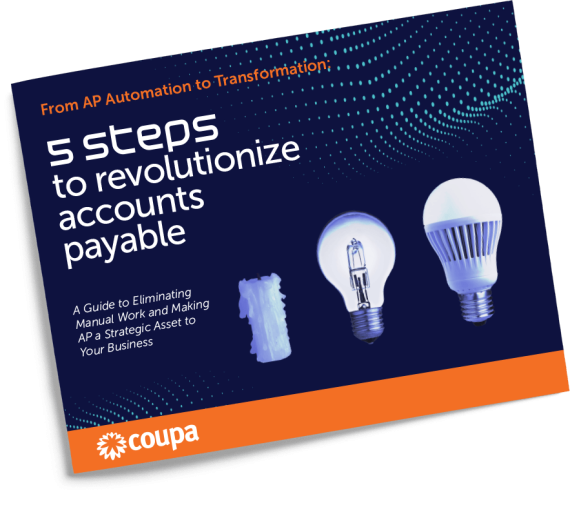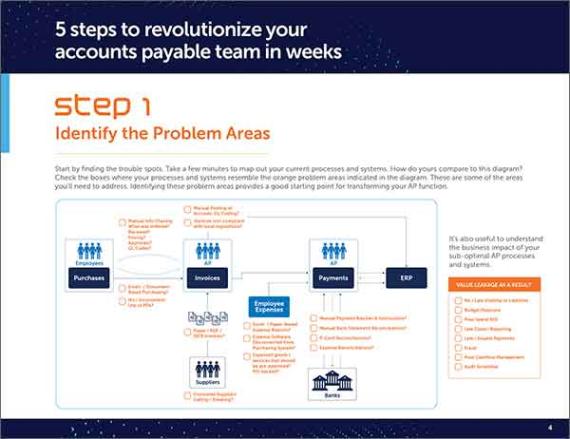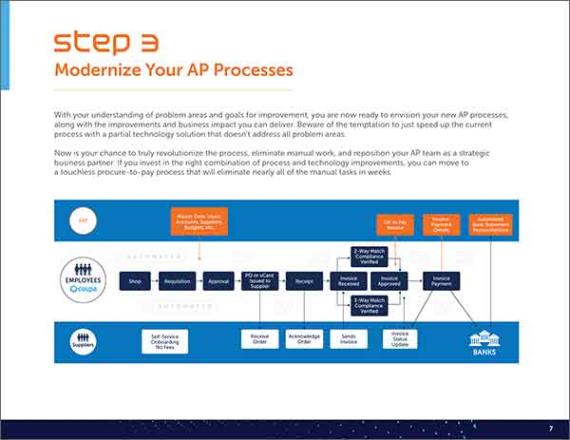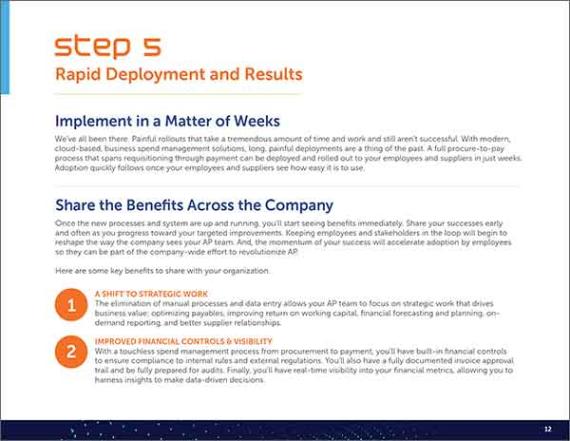From AP Automation to Transformation: 5 Steps to Revolutionize Accounts Payable
Learn how to turn AP into a strategic asset for your business by eliminating manual work, thus reducing risk and putting working capital to better use.
Eliminate Manual Work and Make AP a Strategic Asset to Your Business
Download this e-book to learn how to:
- Benchmark your current accounts payable processes and identify problematic areas to address
- Transform AP to scale performance and free up time for strategic planning and cash management
- Get key cross-functional stakeholders onboard with your AP transformation initiative
Though they are frequently perceived as a tactical back office function. Accounts Payable teams have immense untapped potential. Because AP staff are often bogged down in manual work, they have little time for value-added activities.
Find out how AP can be freed from its tactical role to focus on strategic initiatives like risk reduction and optimizing working capital to drive a competitive advantage and fuel company growth.
Your AP team can become a strategic asset that allows your company to grow with a lower cost structure and quickly take advantage of changing market conditions by expending or conserving cash. As an added bonus, you can stop throwing more headcount at the problem and reduce burnout of your AP employees.
FAQ
What are some questions to ask in order to quantify how much AP automation will impact your business?
Some questions to ask include: How many invoices go missing and how much time is spend resolving lost invoice issues? How do you validate invoices when you don’t have a corresponding PO? How many emails does it take to get an approval? How much do you spend on late payment and bank transfer fees? Do you have an audit trail for every validation and approval? How many AP people do you need to add each year just to keep up?
Who are the stakeholders involved in the AP processes who could benefit from the transformation?
Stakeholders include your suppliers, approvers, your AP team, finance leaders, other employees, IT, and executives. See the report for the ways to communicate the value of AP automation to these stakeholders.
How does AP automation reduce compliance issues?
A full procure-to-pay system has built-in governance for invoicing. Audit trails and approvals are maintained and easy to show. Invoices are automatically validated line-by-line against POs or contracts, ensuring controls are met without the risk of human intervention. And, you can take advantage of built-in country-specific invoicing compliance requirements for international suppliers.



